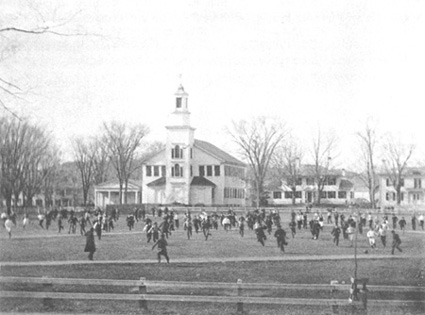A new group called the Hill Winds Society appears to combine the one-time functions of the Admissions Office (giving tours) and Palaeopitus (preserving traditions). The group trains its members to give special tradition-based tours of campus. (See the Alumni Relations announcement, the story in The Dartmouth, and a mention in a press release).
One really hates to be a bugbear about this, but the announcement might have been worded differently:
From the Green, the site of the Dartmouth Night bonfire since 1891 1901 [or the 1940s] and, before then, funeral pyres for sophomores’ math books, all paths lead to tradition: to 105 Dartmouth Hall, where the Great Issues lectures enthralled students in the mid-twentieth century; to Sanborn Library and its daily high tea; to Occum Occom Pond, where the “polar bears” swim have swum for the last few years; to Parkhurst, where today’s students shake the hand of President James Wright ’64a during the fall matriculation ceremony; and, of course, to Observatory Hill, where the triumvirate biumverate of tradition — the Bartlett Tower, the Robert Frost statue, and the Old Pine stump — reigns over the campus.
[…]
One of the few pines not felled in 1769, when the College founders razed the woods in the area to build Dartmouth Hall during the nineteenth century, the Old Pine long stood the test of time on the rocky hill now named Observatory Hill.
Here’s hoping the group is a success.
—–
[Update 11.10.2012: Broken link to article fixed.]

